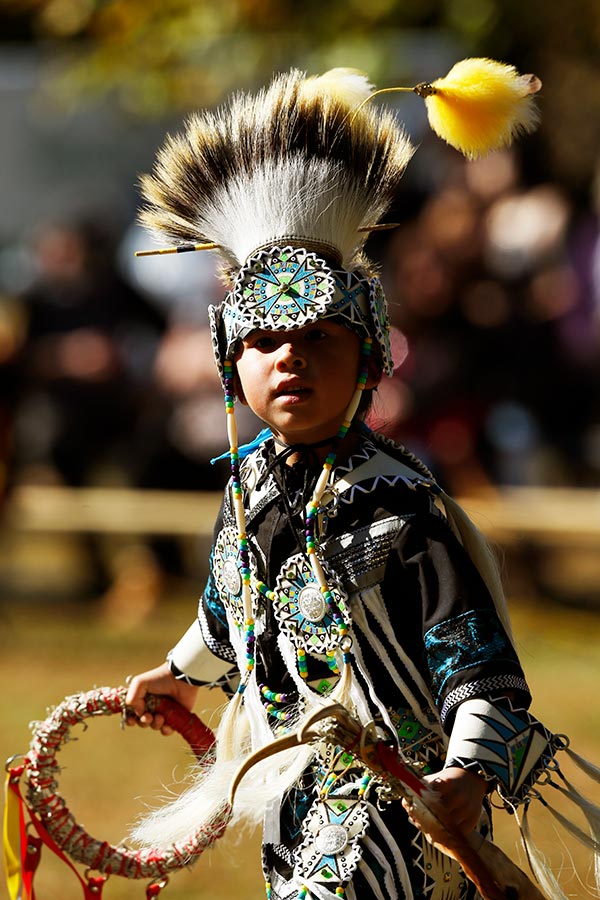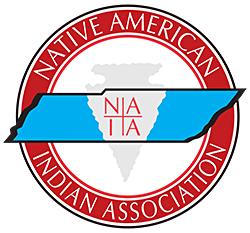The main office of NAIA is situated in Nashville, Tennessee. Our program activities extend across several counties throughout Tennessee. Our membership encompasses a wide variety of Tribes as well as numerous non-Native individuals.

The Native American Indian Association of Tennessee, Incorporated (NAIA) is a service agency for Native American Indians of Tennessee. It has been chartered as a tax-exempt non-profit corporation since 1980, under provisions of section 501(c)3 of the federal Internal Revenue Code, to improve the quality of life for Native American Indians in Tennessee. NAIA serves the Native American Indian population of Tennessee with the following goals:
NAIA is the only statewide non-profit organization with an all-Indian Executive Board of Directors elected by the membership. NAIA represents the concerns of the more than 30,000 Native American Indian residents of Tennessee. NAIA is a service organization based on the principles of self-determination and self-reliance.
NAIA strives to represent all Native American Indians regardless of sex or Tribe. Because there are no reservations in Tennessee, there has been no state or federal recognition of the Native American Indian population and no services directed to them.


Statement of Non-Political Involvement
As a public, non-profit organization, the NAIA is specifically prohibited from participation or intervention in any political campaign on behalf of any candidate for public office. Furthermore, NAIA cannot invest a substantial part of the activities of the Organization to the carrying on of propaganda or otherwise attempting to influence legislation.
These limitations do not restrict the Organization in providing information to the public or to elected officials about educational topics. Additionally, it does not restrict the Organization in organizing forums or disseminating information to the public which furthers its mission statement.

The Native American Indian Association was founded by Indians for Indians. On the hot morning of October 2, 1982, at the newly dedicated Riverfront Park in Nashville a few concerned individuals were called together by Ray Emanuel to discuss the possibility of forming an organization which would serve the Native American Indian population of Tennessee. These ten original members joined efforts to found the Native American Indian Association:
-
Sally Wells (Choctaw)
-
Nina Brannon
-
Etta Purcell
-
Robert (Bob) Horton
-
Bill Woodard (Navajo)
-
Diamond (Dolly) Orlando
-
Ray Emanuel (Lumbee)
-
Peggy Williamson (Cherokee)
-
Jerry Freeman
-
Majorie Freeman
NAIA has been bolstered by a diverse group of individuals since its inception, including its founding members. From the outset, Etta Purcell played a pivotal role in connecting NAIA with Mr. Warren Smith. Etta knew Mr. Smith as her young neighbor that she had babysat. By 1982, Mr. Smith, freshly graduated from law school and eager to aid others, secured NAIA’s 501(c)(3) status, subsequently offering his support and counsel over the years. Similarly, Chuck Creasy, a local art director, contributed his skills by volunteering to design pamphlets for the Pow Wow in the 1990s, having been inspired to enhance NAIA’s branding during his tenure at a print shop. Mayor Richard Fulton was instrumental in securing NAIA’s first office within the historic Stahlman Building in downtown Nashville.
While housed in the Stahlman Building, NAIA launched and managed three key programs: Workforce Innovation, Administration for Native Americans, and the Indian Education program. The Indian Education program primarily served a Choctaw community in West Tennessee as “Project Smoke Signals”, focusing on teaching English to young students who spoke only Choctaw language at home, facilitated by other Native educators. The Workforce Innovation program, enduring through the years, now operates from our Smyrna, TN, office.
One of the most noteworthy contributions of the NAIA is its role in organizing the annual Tennessee Indian Education Pow Wow. The first gathering was in 1980 at Suggs Creek Saddle Club started as a fall gathering of Native people to eat together and tell stories. Today, it has evolved into an expansive three-day event hosted at Long Hunter State Park. This significant event serves as a vibrant cultural celebration, showcasing the rich heritage, traditions, and customs of Native American communities. It provides an educational platform for both Native people and the wider public, fostering a deeper understanding and appreciation of Native American culture.
NAIA has also made significant contributions through various platforms. Bill Wells and Wynnona Yellowhammer took to the airwaves with a Native American Radio Show that brought Native music to the Nashville area. Diamond Dolly Orlando, with board assistance, disseminated the Smoke Signals newsletter nationwide, further connecting the community. For many years, Bill Wells, alongside other members of the NAIA, adorned floats and took part in the Nashville Christmas parade, consistently winning the award for best non-commercial float.
Continuing its mission, NAIA remains a crucial advocate and resource for the Native American community, respecting traditions while fostering future growth. In 2012, the acquisition of land on Bell Road marked a milestone towards establishing the Southeast’s sole Intertribal Cultural Center. The envisioned Circle of Life Cultural Center is a testament to NAIA’s enduring commitment to celebrating and nurturing Native American heritage and culture, with plans to commence construction soon.
In the heart of our organization lies a symbol that embodies the spirit, resilience, and unity of our community—the NAIA seal. This seal was designed by Ms. Sheri Robinson in 1983 to symbolize our journey, strength, and resilience. Today, we pause to honor the memory of Ms.Sheri Robinson, the incredibly talented individual who gifted us this emblem, an artist whose legacy continues to inspire and unite us in our mission and values. As we dedicate the NAIA seal in her memory, we are reminded of the profound impact one individual’s talent and generosity can have on a community. Ms. Sheri Robinson’s spirit will forever be a part of our organization, and her artwork will continue to guide and inspire future generations.

Tanasi. Tennessee. An evolution of a Cherokee village, in both name and spirit. You have only to look at a map of Tennessee to see the lasting influence of Native American peoples in our state. Read the place names aloud and listen to the echoes of the old tongue in Etowah, Sewanee, Chattanooga, Hiwassee, Chickamagua, Nickajack, Tellico, and Tullahoma. Speak the name Tennessee and you’ve uttered a tribute to our first nations’ musical word for where the river bends.
Those who came to the new world were met by people native to the land and lived because of the natives’ generosity. Lewis and Clarke’s expedition to reach the western edge of America was aided and guided by Native Americans. Andrew Jackson survived and made his reputation during the War of 1812 with the help of the Cherokees who joined him in the fight.
With the Trail of Tears in 1838, the brutal and forced expulsion of Indigenous peoples, the First Nations rightful claim to the land called Tennessee was dramatically and forcibly dissolved. Ironically, it was an American president from this state, Andrew Jackson, a man whose life had been saved by the Cherokee in the War of 1812 – who oversaw the First Nations removal from the land. Even today, in spite of ancestral ties to the land and a significant population in the state the Native American Indian has no place to call home in Tennessee.
Despite this, Native artists, performers, and crafts people are as active and vibrant today as they’ve ever been. Their work tells the ongoing story of their heritage and resilience.
Because there are no Native American Indian reservations in Tennessee, there are no state or federal services, representation, or recognition of the First People here. To address this deep need, the Native American Indian Association of Tennessee has worked since 1980 to improve the quality of life for Native American Indians in the state. Through the annual Tennessee Indian Educational Pow Wow, Natives and non-natives alike have the opportunity to experience a unique Intertribal heritage. The Pow Wow is designed to showcase the arts, dances, songs, and storytelling of Native Americans from Tennessee and beyond.


